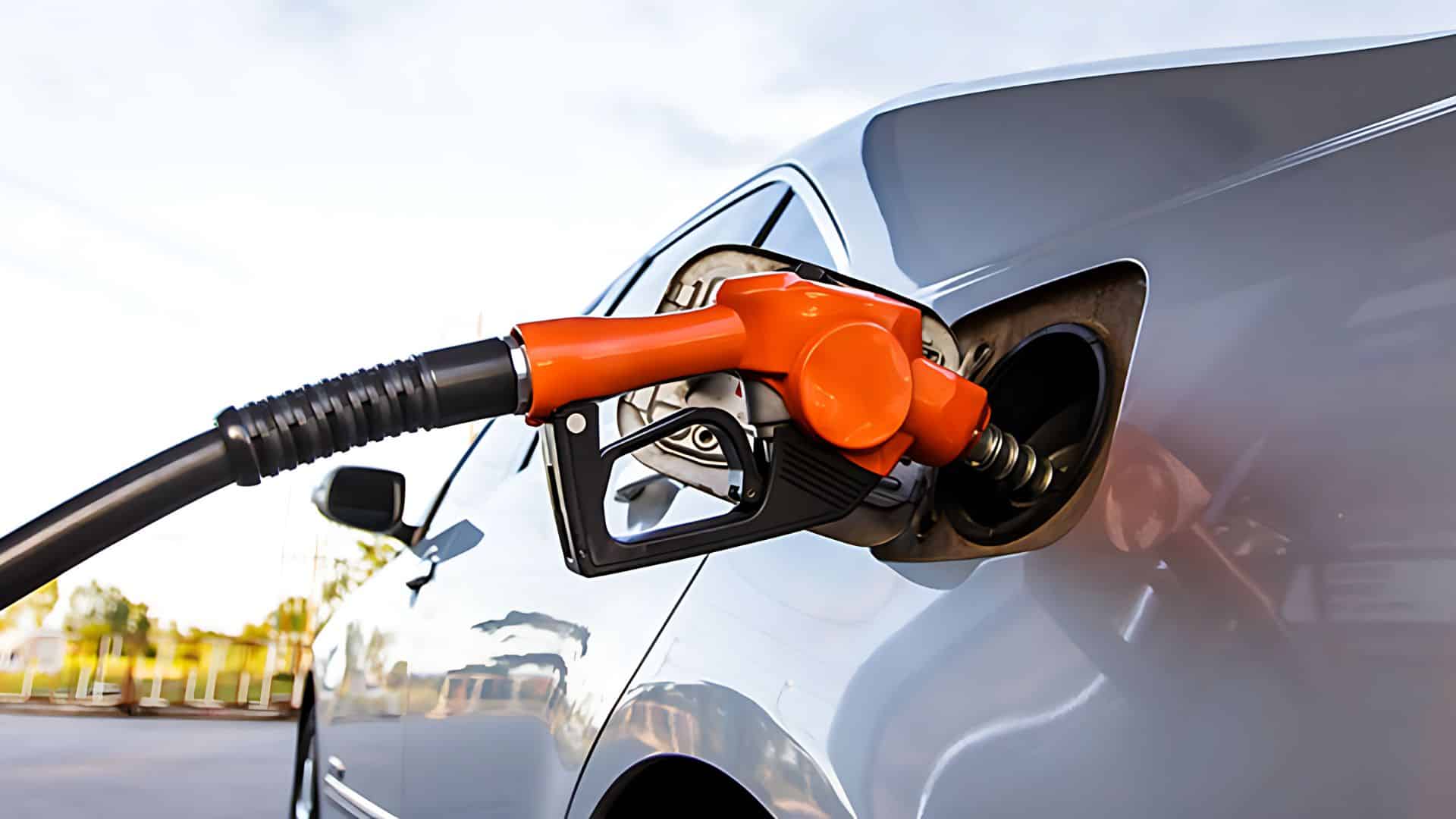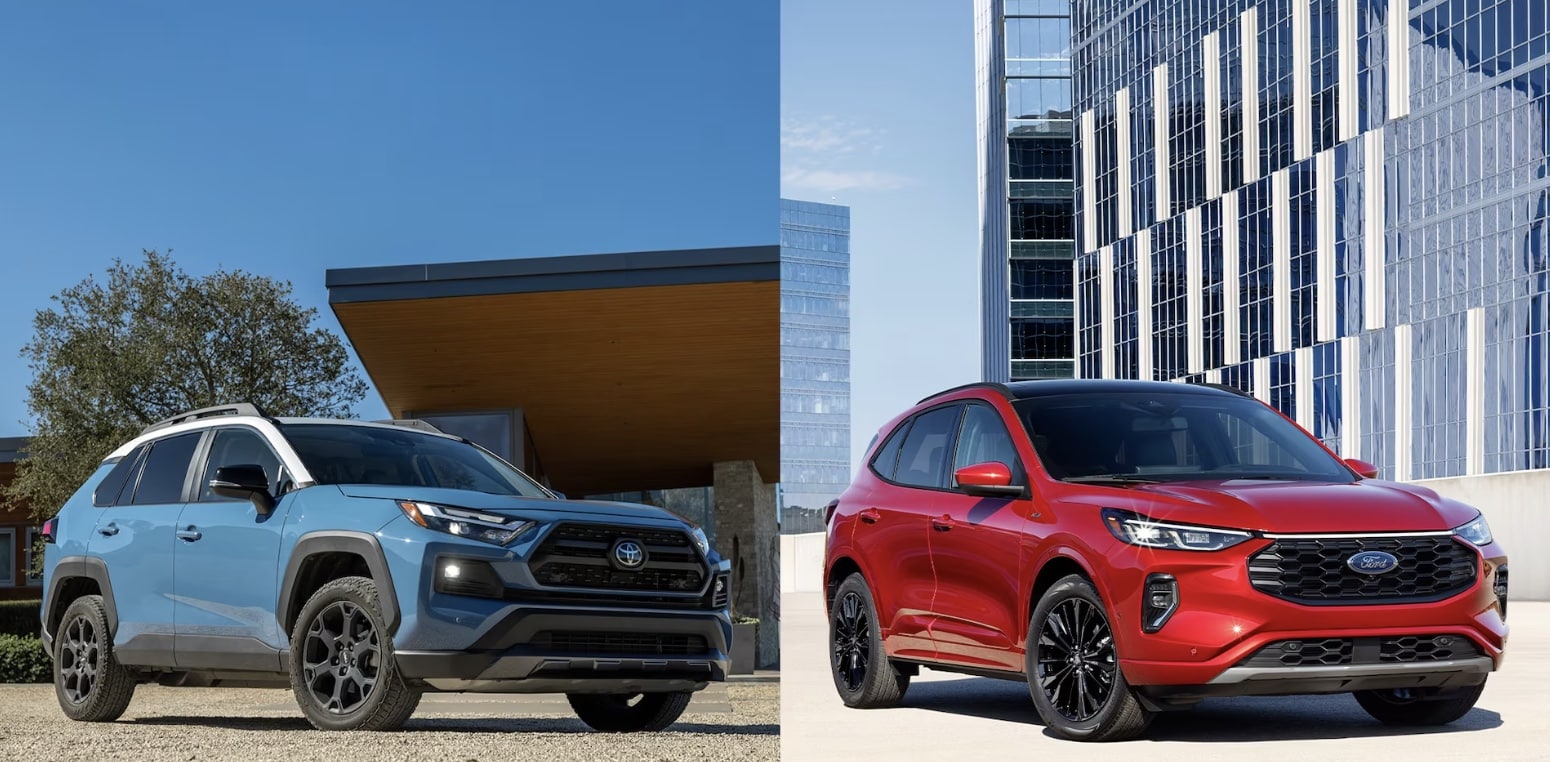Are you considering a Honda CR-V but wondering about its towing capacity? Understanding the CR-V’s capabilities is crucial for hauling a trailer or bringing extra gear on your adventures.
In this blog post, we’ll discuss 12 essential aspects of the Honda CR-V’s towing capacity, giving you the information you need to make an informed decision.
We’ll cover everything from its maximum weight to the differences between trim levels. Plus, we’ll provide tips for safe towing to ensure your trips go smoothly.
Whether you’re an outdoor enthusiast or need to transport items occasionally, keep reading to discover how the Honda CR-V’s towing capacity can meet your needs and take your journeys to the next level.
Ready to discover what makes the Honda CR-V a standout choice for your towing needs? Whether planning weekend getaways or needing to pull essential gear, the CR-V combines versatility with power.
Here are some things that will help you understand the Honda CR-V’s towing capacity to make the most informed decision about your adventures.
1. Honda CR-V Towing Capabilities: Standard and Hybrid Models

The Honda CR-V offers versatile towing capabilities across its trim levels, making it a practical choice for various towing needs.
Standard Towing Capacity

In most non-hybrid trim levels, such as the LX, EX, and EX-L, the Honda CR-V can tow up to 1,500 pounds when properly equipped. This capacity is suitable for handling a variety of small trailers, including pop-up campers and utility trailers carrying personal watercraft, motorcycles, or ATVs.
Key features:
- Engine: 1.5-liter turbocharged engine.
- Power: 190 horsepower and 179 pound-feet of torque.
- Transmission: Continuously Variable Transmission (CVT).
To achieve this maximum towing capacity, ensure your CR-V is equipped with the proper towing package, which includes a trailer hitch and wiring harness. Without this equipment, towing is not recommended, as it can stress your vehicle and create safety hazards.
Hybrid Model Capacity

For those opting for a hybrid model, such as the Sport Hybrid or Sport Touring Hybrid, the towing capacity is slightly lower at 1,000 pounds. This reduction is due to the hybrid powertrain configurations prioritizing fuel efficiency. However, this capacity is still sufficient for towing lighter loads, such as small utility trailers or bicycles.
Key features:
- Engine: 2.0-liter four-cylinder engine combined with an electric motor.
- Power: Total system output of 212 horsepower.
- Fuel Economy: 40 miles per gallon (mpg) in the city and 35 mpg on the highway.
While the towing capacity is lower, the hybrid CR-V models offer superior fuel economy, making them an excellent choice for those who prioritize efficiency without sacrificing towing capability.
By understanding the towing capacities and configurations of standard and hybrid Honda CR-V models, you can choose the best option for your towing needs and enjoy a reliable and efficient driving experience.
2. Proper Towing Setup is Key
To maximize your Honda CR-V’s towing capacity, you should have the right towing setup. This means more than just attaching a trailer hitch to your vehicle—it also involves ensuring your CR-V is properly equipped for the job.
One important factor is ensuring your CR-V has the right engine and transmission for towing. The 1.5-liter turbocharged engine is a great choice for towing, as it provides plenty of power and torque to handle the extra weight.
Another key aspect is having the right towing accessories, such as wiring straps to connect your trailer’s lights and brakes to your CR-V. You may also want to consider adding features like trailer sway control, which can help keep your trailer stable and prevent accidents.
Properly setting up your CR-V for towing will make for a safer, more efficient, and more enjoyable experience, whether pulling a small camper or a utility trailer full of equipment; the right setup can make all the difference.
3. Utility Package Advantages
Consider adding the available utility package to maximize your CR-V’s towing capabilities. This package includes a trailer hitch, a wiring harness, and a receiver, making it easier and safer to tow your gear.
The utility package also comes with roof rails and crossbars, which allow you to carry additional cargo on top of your vehicle, freeing up space inside for passengers and other essentials.
With the utility package, you can have peace of mind knowing that your CR-V is properly equipped for towing.
The trailer hitch is designed to distribute weight evenly, while the wiring harness ensures that your trailer’s lights and brakes function correctly, enhancing safety on the road.
4. Towing Stability Features
The Honda CR-V is engineered with towing stability in mind. It has various features that help maintain vehicle control and performance while towing. These include:
- Vehicle Stability Assist (VSA) with Traction Control: This system helps maintain directional control during cornering, reducing the risk of understeer or oversteer.
- Hill Start Assist: When stopped on an incline, this feature prevents the CR-V from rolling backward when you release the brake pedal, making it easier to start moving forward with a trailer attached.
- Real-Time AWD with Intelligent Control System: Available on all trim levels, this advanced all-wheel-drive system distributes power to the wheels that need it most, providing enhanced traction and stability in various driving conditions.
These features work together to ensure your CR-V remains stable and easy to control, even when towing a trailer.
5. Towing Can Affect Your Honda CR-V’s Warranty
When considering towing with your Honda CR-V, it’s crucial to understand how it may impact your vehicle’s warranty. Honda provides a comprehensive CR-V warranty, including a 3-year/36,000-mile limited warranty and a 5-year/60,000-mile powertrain warranty.
However, towing can sometimes affect these warranties if not done properly. If you plan on towing with your CR-V, it’s essential to follow Honda’s recommended towing guidelines, which include:
- Staying within the maximum towing capacity of 1,500 pounds (1,000 pounds for hybrid models)
- Using a properly installed towing hitch and wiring harness
- Ensuring that your trailer is properly loaded and balanced
- Maintaining your CR-V according to the recommended service schedule
If you follow these guidelines and something goes wrong with your CR-V covered under warranty, Honda will likely honor the warranty. However, you risk voiding your warranty if you exceed the towing capacity or improperly install a towing hitch.
For example, if you try to tow a 3,000-pound trailer with your CR-V and the transmission fails, Honda may deny your warranty claim. This could leave you facing expensive repair bills out of pocket.
To avoid any issues with your warranty, it’s always best to follow Honda’s towing guidelines and to have your towing setup installed by a professional. If you’re unsure about towing and your warranty, don’t hesitate to contact your local Honda dealer for guidance.
6. Towing Capacity Differs Between Front-Wheel Drive and All-Wheel Drive Models
When considering the Honda CR-V’s towing capacity, it’s important to note that there is a difference between front-wheel drive (FWD) and all-wheel drive (AWD) models. While both configurations can tow, the AWD models have a slight advantage in towing capacity.
FWD Honda CR-V models have a maximum towing capacity of 1,500 pounds, making them suitable for towing small trailers, such as pop-ups or utility trailers carrying light equipment. This towing capacity is achieved through the efficient 1.5-liter turbocharged engine and the continuously variable transmission (CVT) that provides smooth power delivery.
Conversely, AWD Honda CR-V models can tow up to 1,500 pounds with improved traction and stability. The AWD system distributes power to all four wheels, providing better grip on slippery or uneven surfaces. This is particularly useful when towing in challenging weather conditions or rough terrain.
When deciding between FWD and AWD Honda CR-V models for towing, consider your specific needs and the conditions you’ll be towing in. A FWD model may suffice if you plan on towing in mostly dry, paved conditions. However, an AWD model may provide added peace of mind and performance if you anticipate towing in wet, snowy, or off-road conditions.
7. Towing Affects Fuel Economy

When towing with your Honda CR-V, remember that the added weight of a trailer can significantly impact your vehicle’s fuel economy. This is because the engine has to work harder to pull the extra load, which requires more fuel.
The exact impact on fuel economy will depend on factors like the weight of your trailer, your driving habits, and the terrain you’re traveling on. However, as a general rule, you can expect your CR-V’s fuel economy to decrease by about 20-30% when towing a trailer.
For example, if your CR-V normally gets 30 miles per gallon (mpg) on the highway, you might see that number drop to around 21-24 mpg when towing a trailer. This can add to significant extra fuel costs over time, especially if you do a lot of towing.
To help minimize the impact on fuel economy, there are a few things you can do:
- Keep your trailer weight within the recommended limit for your CR-V
- Make sure your trailer is properly maintained, with properly inflated tires and well-lubricated bearings
- Avoid rapid acceleration and braking, and maintain a steady speed when possible
- Plan your route to avoid steep hills and other challenging terrain when towing
By considering these factors and adjusting your driving habits accordingly, you can help reduce the impact of towing on your CR-V’s fuel economy. This will save you money at the gas pump and help ensure your vehicle runs efficiently and sustainably, even with a trailer in tow.
8. Safety Protocols for Towing
To ensure a safe and successful towing experience, it’s crucial to follow proper safety protocols. Before setting out on your journey, take the time to:
- Ensure your vehicle is properly equipped with a trailer hitch and wiring harness
- Check that your trailer’s lights and brakes are functioning correctly
- Distribute weight evenly in your trailer, with 60% of the load in the front half
- Confirm that your trailer’s tires are properly inflated and in good condition
- Secure all cargo to prevent shifting during transit
Additionally, when driving with a trailer, allow extra stopping distance, take turns slowly, and avoid sudden maneuvers. By following these safety protocols, you can minimize the risk of accidents and ensure a smooth towing experience.
9. Towing Can Affect Your CR-V’s Resale Value
When towing your Honda CR-V, consider how it may impact its resale value. While towing doesn’t necessarily decrease its value, the wear and tear of frequent towing can lead to reduced resale prices.
When you tow with your CR-V, the added weight and stress on the engine, transmission, suspension, and other components can cause them to wear out more quickly than they would under normal driving conditions. Over time, this increased wear can lead to more repairs and shorter component lifespans.
Additionally, suppose you modify your CR-V to enhance its towing capabilities, such as installing a heavy-duty hitch or upgrading the suspension. These changes can also affect your vehicle’s resale value.
To help minimize the impact of towing on your CR-V’s resale value, consider the following tips:
- Only tow when necessary and avoid exceeding your vehicle’s maximum towing capacity
- To keep your CR-V in top condition, perform regular maintenance, including oil changes, tire rotations, and brake inspections.
- If you make any towing modifications, choose high-quality, reversible options that can be easily removed.
- Keep detailed records of your CR-V’s maintenance and towing history to provide transparency to potential buyers.
By being mindful of how towing can affect your Honda CR-V’s resale value and minimizing wear and tear, you can help protect your investment and ensure your vehicle retains its value over time.
10. Comparative Analysis with Other Car Models

Compared to other vehicles in its class, the Honda CR-V stands out for its combination of towing capacity, fuel efficiency, and overall performance.
Its 1,500-pound towing capacity is competitive with other compact SUVs like the Toyota RAV4 and Ford Escape.
However, the CR-V’s fuel economy figures are among the best in its class, especially when considering the hybrid models.
This means you can tow your gear without sacrificing fuel efficiency, a significant advantage over less efficient competitors.
The CR-V’s spacious interior and comfortable ride make it an excellent choice for long trips with a trailer in tow. Its responsive handling and advanced safety features make towing more enjoyable and confident.
Below showing the towing capacity of rival car models of Honda CR-V:
| Model | Towing Capacity |
|---|---|
| Toyota RAV4 | 3,500 pounds |
| Ford Escape | 3,500 pounds |
11. Additional Towing Accessories
In addition to the trailer hitch and wiring harness included in the utility package, there are several other accessories you can add to your CR-V to enhance your towing experience:
- Trailer sway control: This system uses sensors to detect trailer sway and automatically applies the brakes to individual wheels, helping to stabilize the trailer.
- A rearview camera with guidelines: The CR-V’s standard rearview camera includes guidelines that help you align your vehicle with your trailer when hitching up.
- Trailer brake controller: This device allows you to adjust your trailer’s brakes independently from your vehicle’s brakes, providing more control and stopping power.
- Hitch ball mount and trailer ball: Depending on your trailer’s coupler, you may need a hitch ball mount and trailer ball of a specific size to attach your trailer securely.
These accessories can help make towing safer and more convenient, allowing you to focus on enjoying your adventure.
12. Real-world Applications
The Honda CR-V’s towing capabilities make it versatile for various real-world applications. For example:
- A family using their CR-V to tow a small camper for a weekend getaway to the mountains
- An outdoor enthusiast towing their fishing boat to the lake for a day of angling
- A homeowner using their CR-V to haul landscaping equipment and supplies for a backyard renovation project
- A community organization using a CR-V to tow a trailer full of supplies for a local charity event
The CR-V’s reliable towing capacity, fuel efficiency, and comfortable ride make it ideal for getting the job done in each scenario.
Whether embarking on a recreational adventure or tackling a practical task, the CR-V’s towing capabilities provide the flexibility and performance you need.
Final Thoughts
The Honda CR-V’s towing capacity offers a perfect balance of versatility and performance, making it an ideal choice for a wide range of towing needs.
With a maximum towing capacity of 1,500 pounds for non-hybrid models and 1,000 pounds for hybrid variants, the CR-V can handle everything from small campers to boats and utility trailers.
Its fuel efficiency, advanced safety features, and available towing accessories enhance its appeal as a reliable and capable towing vehicle.
Whether planning a family vacation, a weekend adventure, or needing to haul equipment for a project, understanding the Honda CR-V’s towing capacity is key to making an informed decision.
With its consistent performance and practicality, the CR-V is ready to be your trusted companion on the road, wherever your journeys may take you.


